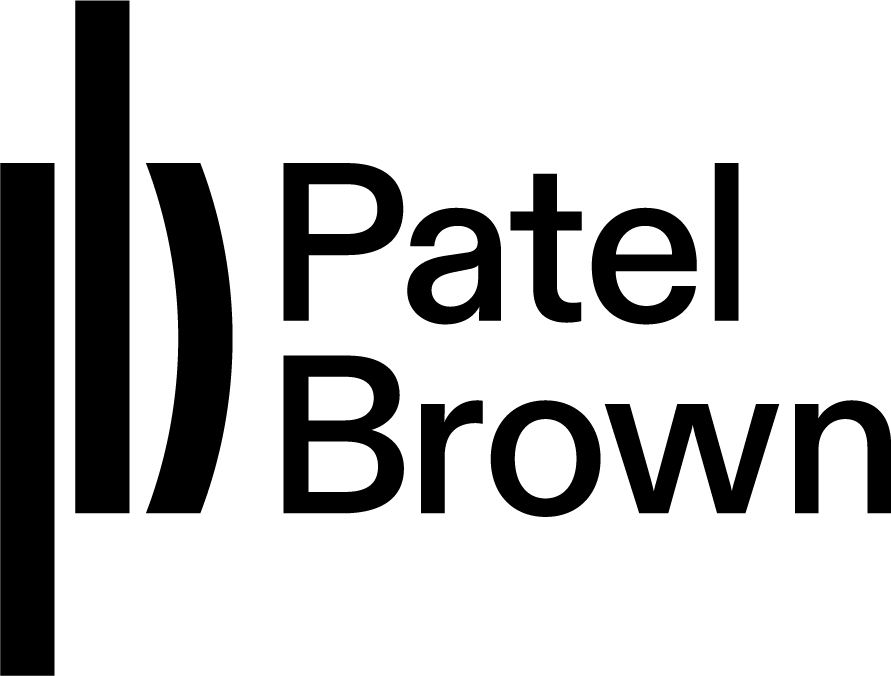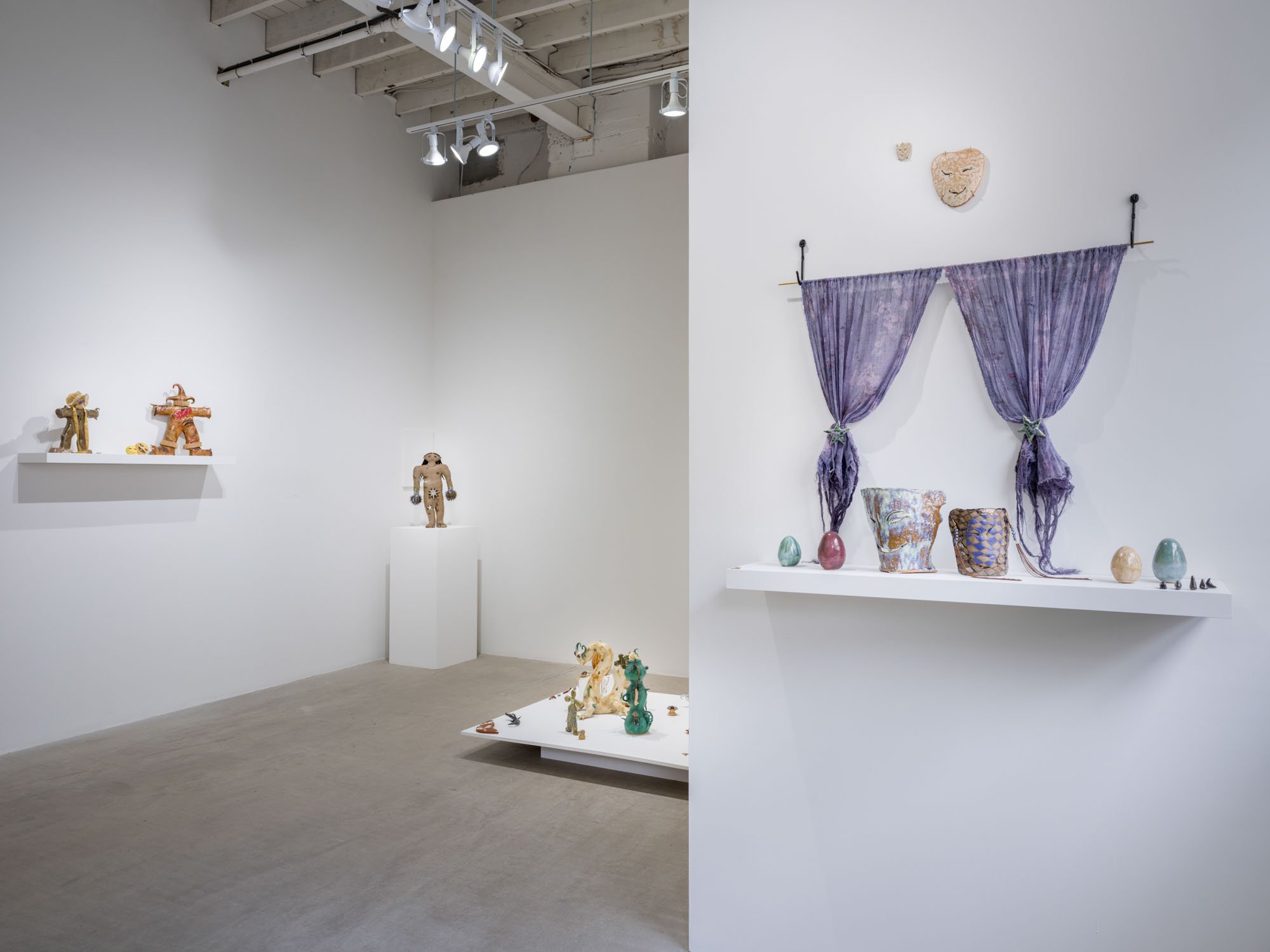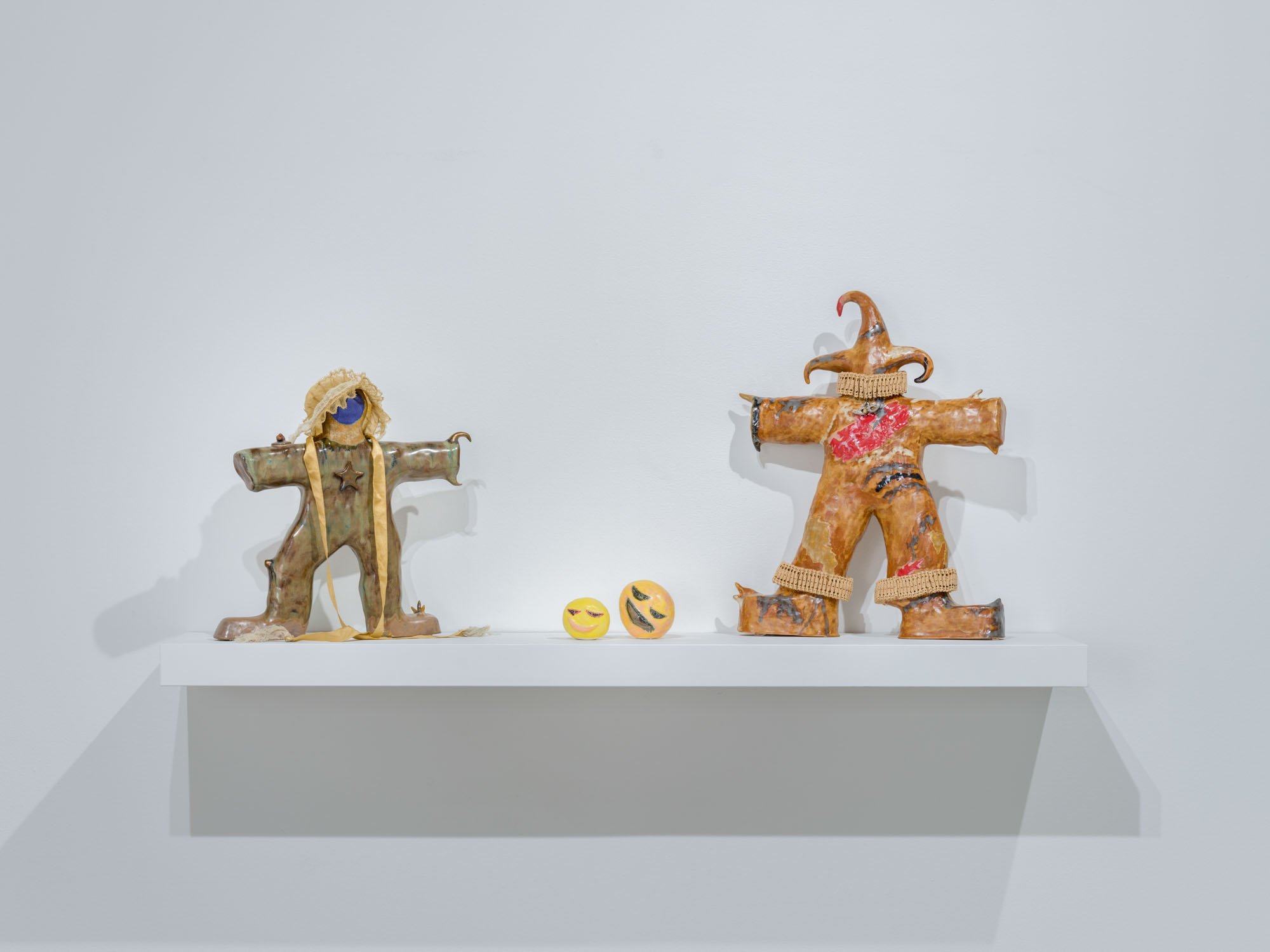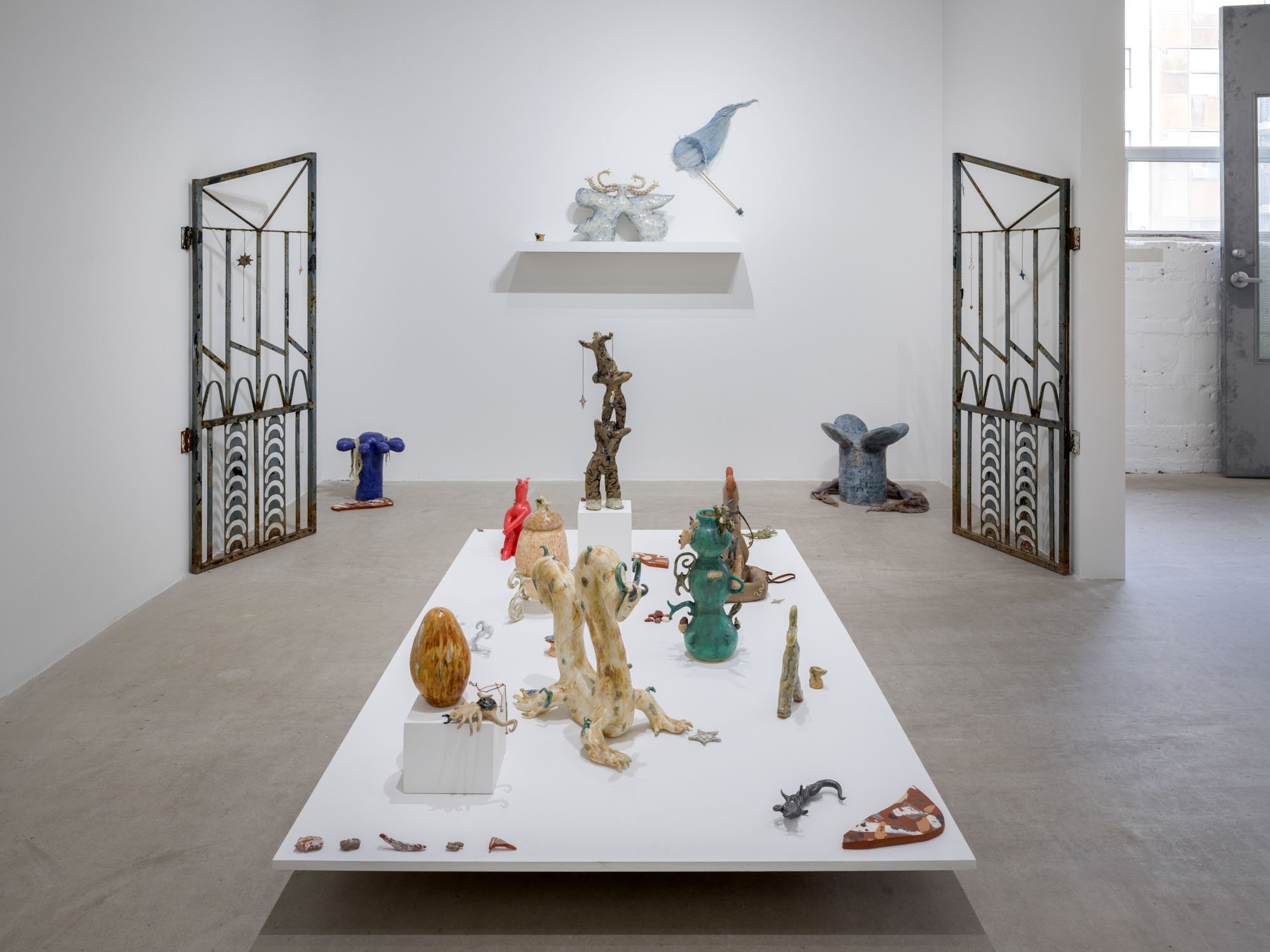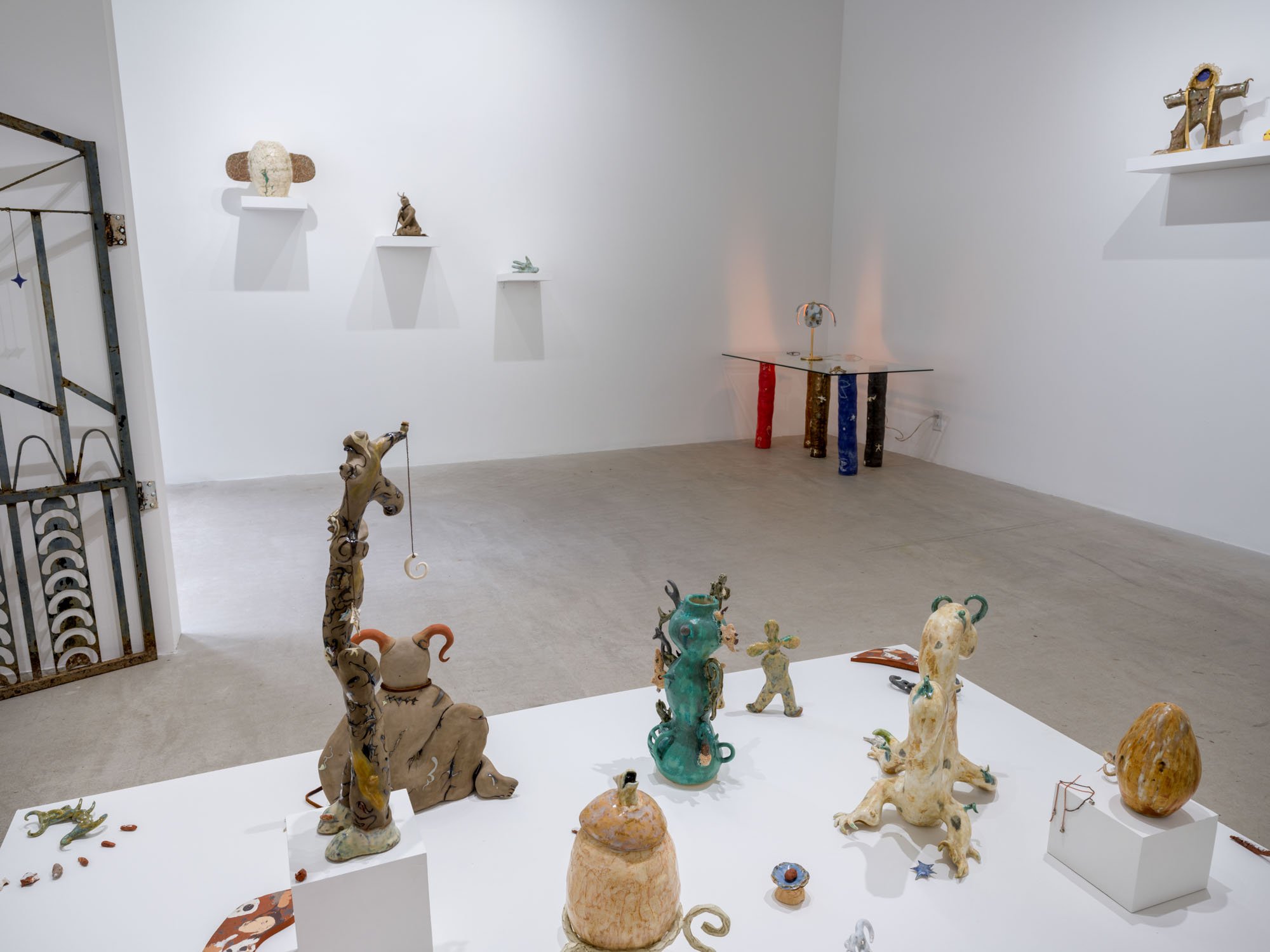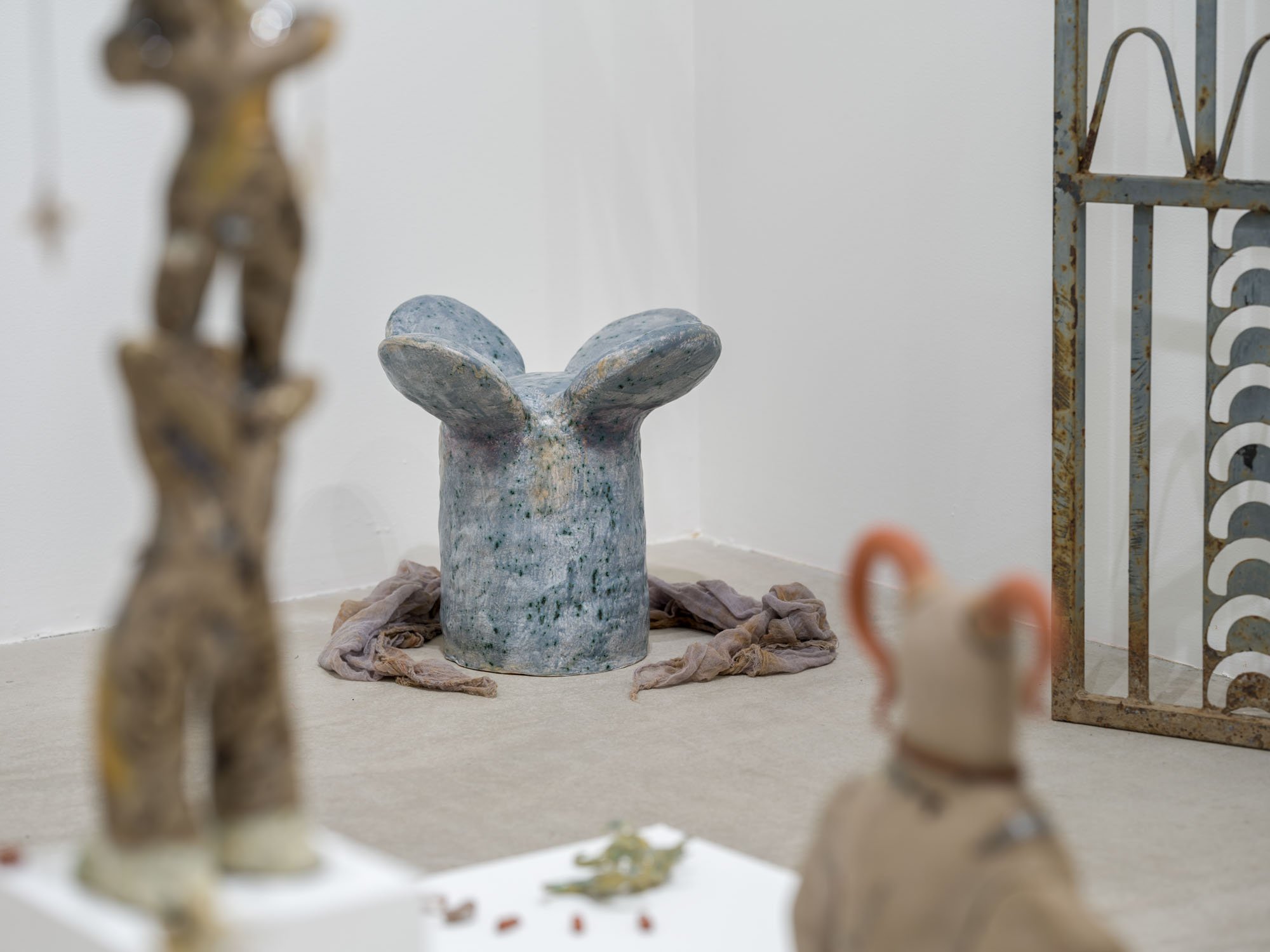21 WADE AVE #2 | TORONTO
Kendra Yee | Tip of the TOngue
22 JUNE - 9 SEPTEMBER 2023
A Dialogue for Three Voices:
On Kendra Yee’s Tip of the Tongue
The Actor. The Artist. The Gardener.
In peculiar contrast to the common indoor stage
theaters of today, the tradition of outdoor theaters
can extend back to 1600s Europe among
numerous places. An example: The Globe theater,
famous as a venue for the plays of William
Shakesphere, and its predecessors who
entertained audiences under sunshine and rain.
The soil of a garden is also stamped upon by
those who frolic and play-make belief within its lush greenery.
A stage in and of itself perhaps?
The stage of a theatre- it's empty until a false
environment is built on top of it. Even then, it’s only
completed to the degree in which the audience
needs to discern the setting of a scene. The inverse
of what is visible is unfinished, negative space.
Kendra Yee’s Tip of the Tongue recontextualizes the garden
features and furniture to shape a new environment for
the works to inhabit.
Allusions to the fences and structures that
partition off a garden.
***
Yee is thinking in opposites; through presenting a personal world
outward, the characters of this exhibition seek to balance interior
and exterior interpretations of the self.
Who an actor is whilst behind the curtains, and who
they are once they hit that stage.
Who we are in public and private space.
The intrigue lies within the interplay of these polarizing forces.
***
As an amalgamation of angelic and infernal sensibilities, theatrical
personas and mischievous entities reside in this exhibition:
The Magician and their tricks.
The Joker, their pleasantries and distractions
The Hero and their courage.
Demons and the shadows they lurk in.
Mortals made of light and other mythic beings.
Their braids of hair grow into vines that
grow into critters that skitter around the
garden.
***
Upon entering the gallery, the audience is greeted with a set of
theatre masks sprawled across a shelf, with cheesecloth curtains
parted out of their way.
Used to slow the drying of greenware, as it waits to be fired in the
kiln. The process of making becomes performance. The body
must engage with the clay as a scene partner, building forms up
through kneading, smoothing and shaping. An artist and a material
that must be responsive to each other, initiating a dialogue.
Theatre masks! Quintessential symbols of drama
and the stage, props used by an actor to shapeshift
into a new character. Masks allude to the personas
one may put on to engage with the outside world.
And so, to exist outside of yourself momentarily is essential to how
Tip of the Tongue reintroduces the idea of play back into our adult
lives. While Yee imparts distinct characteristics onto her
characters, there’s a variableness to their stories.
Consider them like players in unspecified scenes.
These works feature props and articles of clothing
as costumes, even. From leashes and bonnets to
ribbons and nets, the sprinkles of personality and
quirk imbue new sentience onto seemingly still
sculptures.
Referring back to the dual qualities explored in this exhibition,
characters in the space bare connections to other characters,
either through similar colour palettes and glazing choices, or body
language, size and stature. These pairings suggest intimate
dynamics between artworks.
They’re two scene partners.
They’re two kindred spirits at play.
***
The idiom from which this exhibition finds its namesake is a
double entendre. Tip of the Tongue. Referring to the ritual
repetition of tongue twisters, the alliteration of the phrase is a nod
to the performer’s prelude: Practicing vocal articulation before the
monologue is spoken.
The tip of the tongue, the teeth, the lips
The tip of the tongue, the teeth, the lips
The tip of the tongue, the teeth, the lips
It is also an idiom used to being on the edge of completing a
thought or forgetting to retrieve a fragment of a memory.
In daydreaming, it is easy to forget to leave
the garden’s gate closed
The thoughts start to stroll.
To move through this installation is to become privy to a set of
peculiar happenings. Mediating a viewing experience, the partition
structures of a fence and a curtain presents a perimeter that the
audience is invited to step into.
Shhh…
Find your seat as the house lights turn off and the
show begins.
Peer over the fence to admire the garden
behind it.
Sights of life thriving in a secret place.
— Philip Leonard Ocampo
Kendra Yee (b. 1995, Tkaronto/ Toronto) is an arts practitioner that seeks to materialize the truths and fictions of memory. Yee pulls tales from; personal stories, lived experience and collective narratives to develop site-specific installations that carve alternative archives. Yee has programmed and exhibited with: Patel Brown (Toronto), Heavy Manners (Los Angeles), The Artists Project (Toronto), Juxtapoz (NYC), The Letter Bet (Montreal), Xpace Cultural Centre (Toronto) and the upcoming artist in resident for the RBC Emerging Artist Program at The Robert McLaughlin Gallery (Spring 2024).
Philip Leonard Ocampo (b.1995) is an artist and arts facilitator based in Tkaronto, Canada. Ocampo’s multidisciplinary practice involves painting, sculpture, writing and curatorial projects. Exploring worldbuilding, radical hope and speculative futures, Ocampo’s work embodies a curious cross between magic wonder and the nostalgic imaginary. Following the tangents, histories and canons of popular culture, Ocampo is interested in how unearthing cultural zeitgeists of past / current times may therefore serve as catalysts for broader conversations about lived experiences; personal, collective, diasporic, etc. He holds a BFA in Integrated Media (DPXA) from OCAD University (2018) and is currently a Programming Coordinator at Xpace Cultural Centre and one of the four founding co-directors of Hearth, an artist-run collective based in the city.
